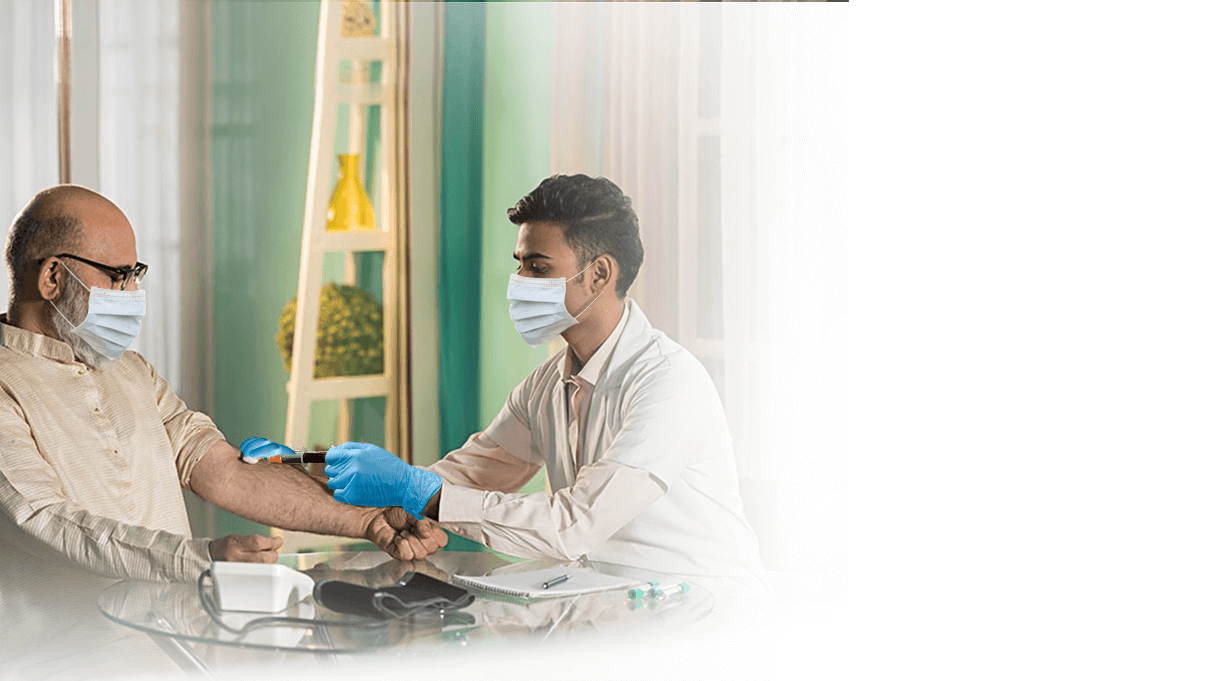A sore throat is one of the most common reasons people visit a doctor, especially during colder months. While many sore throats are caused by viruses, a significant number are due to Group A Streptococcus (GAS) bacteria, the culprit behind strep throat. Since untreated bacterial infections can lead to complications such as rheumatic fever or kidney inflammation, early and accurate testing is essential.
Healthcare professionals rely on two main diagnostic tools to confirm strep throat, the rapid antigen detection test (RADT) and the throat culture. Both are important bacterial infection tests, but they differ in accuracy, turnaround time, and clinical use. This article explores how these tests work, their comparative reliability, and when each should be used for optimal diagnosis.
What Is Strep Throat?
Strep throat is a bacterial infection caused by Group A Streptococcus (GAS), scientifically known as Streptococcus pyogenes. It spreads through respiratory droplets when an infected person coughs, sneezes, or shares utensils.
Common Symptoms Include:
- Sudden sore throat with pain when swallowing
- Red, inflamed tonsils (sometimes with white patches)
- Fever and swollen lymph nodes
- Headache, fatigue, or nausea (in children)
Because these symptoms overlap with viral infections, it is difficult to diagnose strep throat by clinical observation alone. This is why performing a strep throat test, either RADT or throat culture, is crucial to confirm bacterial infection and guide antibiotic treatment.
The Need for Accurate Bacterial Infection Testing
A bacterial infection test for Group A Streptococcus ensures appropriate treatment and prevents complications. Incorrect or delayed diagnosis may lead to:
- Unnecessary antibiotic use in viral sore throats.
- Missed strep throat cases, leading to complications like acute rheumatic fever or post-streptococcal glomerulonephritis.
- Spread of infection to others.
Timely use of the rapid antigen detection test (RADT) or throat culture helps physicians differentiate bacterial from viral sore throat causes, ensuring targeted therapy.
The Throat Swab
Both RADT and throat culture rely on a throat swab sample.
How the Throat Swab Works:
- A sterile cotton swab is rubbed across the back of the throat and tonsils.
- The swab collects mucus and bacterial cells for testing.
- The sample is then processed in either a rapid antigen testing kit or a laboratory culture medium.
Proper sample collection is critical, inadequate swabbing can lead to false-negative results, regardless of the test method.
Rapid Antigen Detection Test (RADT)- Fast Results for Strep Throat Diagnosis
The rapid antigen detection test (RADT) is a quick diagnostic method used in clinics, urgent care centers, and pediatric offices. It identifies specific antigens (proteins) found on the surface of Group A Streptococcus bacteria.
How RADT Works:
- The throat swab sample is mixed with a reagent that extracts bacterial antigens.
- The sample is applied to a test device similar to a pregnancy test strip.
- Within 5–10 minutes, results appear as visible lines indicating whether Group A Streptococcus antigens are present.
Advantages of RADT:
- Speed: Results available during the same consultation.
- Convenience: No need for lab processing.
- Cost-effective: Ideal for rapid screening, especially in busy outpatient settings.
- High specificity: A positive RADT result almost always confirms infection, reducing unnecessary antibiotics for viral sore throats.
Limitations of RADT:
- Sensitivity (Accuracy): The test may miss up to 10–20% of true strep infections (false negatives).
- Cannot detect other bacteria or viruses that cause sore throats.
Because of its speed and accuracy in positive cases, RADT is the first-line strep throat test in most clinical settings. However, negative results often require confirmation with a throat culture, especially in children and teens.
Throat Culture- The Gold Standard for Strep Throat Diagnosis
The throat culture is considered the gold standard for diagnosing Group A Streptococcus infections. It is a laboratory-based bacterial infection test that identifies bacterial growth from a throat swab.
How a Throat Culture Works:
- The swab sample is streaked on a blood agar plate.
- The plate is incubated for 24–48 hours to allow bacterial growth.
- Characteristic colonies of Group A Streptococcus are identified by their beta-hemolytic (clear zone) appearance.
- Additional biochemical or serological tests confirm the diagnosis.
Advantages of Throat Culture:
- Highest sensitivity: Detects even small numbers of bacteria missed by RADT.
- Definitive confirmation: Essential when RADT results are negative but symptoms persist.
- Detects other bacteria: Can identify non-GAS pathogens causing sore throats.
Limitations of Throat Culture:
- Longer turnaround time: Results take 1–2 days.
- Requires laboratory infrastructure: Not suitable for immediate decision-making in outpatient settings.
Despite being slower, throat culture remains indispensable for confirming negative RADT results, ensuring diagnostic accuracy and preventing untreated infections.
Comparing Rapid Antigen and Culture Tests
|
Feature |
Rapid Antigen Detection Test (RADT) |
Throat Culture |
|
Purpose |
Detects strep antigens |
Detects live bacteria |
|
Turnaround Time |
5–10 minutes |
24–48 hours |
|
Sensitivity (True Positive Rate) |
80–90% |
90–95% |
|
Specificity (True Negative Rate) |
95–100% |
98–100% |
|
Best Use Case |
Quick diagnosis in clinic |
Confirmation of negative RADT or complex cases |
Clinicians often use a two-step approach, first a rapid antigen detection test (RADT) for immediate results, followed by a throat culture if the rapid test is negative and clinical suspicion remains high.
When to Use Each Test
According to the Centers for Disease Control and Prevention (CDC) and Infectious Diseases Society of America (IDSA) guidelines:
For Children and Adolescents:
- If RADT is positive, treatment can begin immediately.
- If RADT is negative, confirm with a throat culture because children are at higher risk for rheumatic fever.
For Adults:
- A positive RADT confirms strep throat.
- A negative RADT often does not require follow-up culture, since adults have a lower risk of complications.
This evidence-based approach balances diagnostic accuracy with practicality, minimizing unnecessary antibiotic use.
The Role of Bacterial Infection Tests in Preventing Complications
Accurate strep throat testing plays a vital role beyond diagnosis, it helps prevent potentially serious complications from untreated Group A Streptococcus infections, including:
- Acute rheumatic fever (heart inflammation)
- Post-streptococcal glomerulonephritis (kidney damage)
- Peritonsillar abscesses (deep throat infections)
Early detection with rapid antigen detection test (RADT) or throat culture ensures timely antibiotic treatment, reducing symptom duration and preventing transmission to others.
Sore Throat Causes- When It’s Not Strep
While Group A Streptococcus is a major cause of bacterial sore throats, other infections or irritants can cause similar symptoms.
Common Non-Strep Causes:
- Viral infections (common cold, influenza, COVID-19, Epstein–Barr virus)
- Allergies or irritants (smoke, pollution)
- Other bacteria such as Mycoplasma pneumoniae or Arcanobacterium haemolyticum
This highlights the importance of using a strep throat test before prescribing antibiotics, unnecessary antibiotic use contributes to resistance and side effects.
Future of Strep Throat Diagnosis
Newer generations of rapid antigen detection tests (RADT) are improving in both sensitivity and automation. Some modern kits can detect Group A Streptococcus in under 5 minutes with near-culture accuracy.
In addition, molecular PCR-based rapid tests are emerging, offering the speed of RADT with the accuracy of a throat culture. However, these tests remain more expensive and less available in primary care settings.
Ongoing research aims to enhance bacterial infection test accuracy, reduce costs, and ensure universal access to reliable diagnostics in both high- and low-resource environments.
Accurate and timely diagnosis of strep throat is vital to preventing complications and ensuring appropriate antibiotic use. The rapid antigen detection test (RADT) provides fast results, making it an ideal strep throat test in clinical settings. However, due to occasional false negatives, the throat culture remains the gold standard for confirmation.
By understanding the strengths and limitations of both tests, clinicians can tailor diagnostic strategies based on patient age, symptoms, and risk factors. Together, these tests form the cornerstone of effective bacterial infection testing, ensuring that Group A Streptococcus infections are treated promptly, while avoiding unnecessary antibiotic use for viral sore throat causes.


